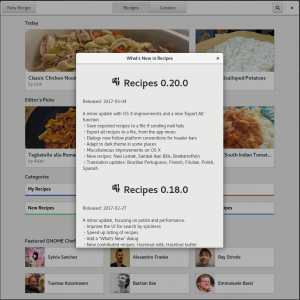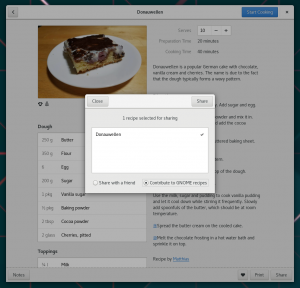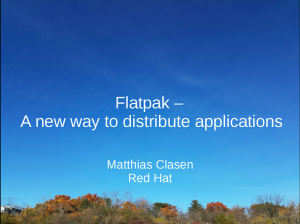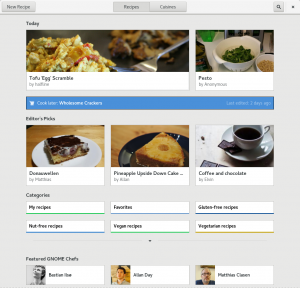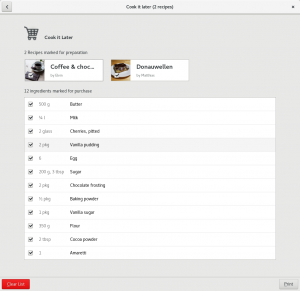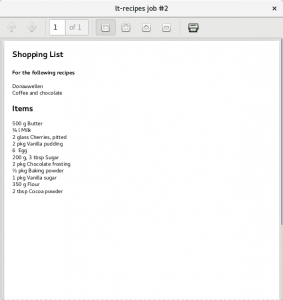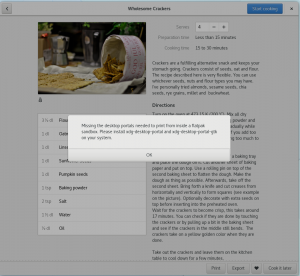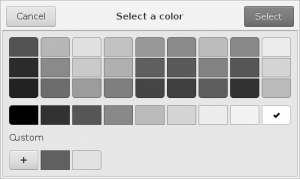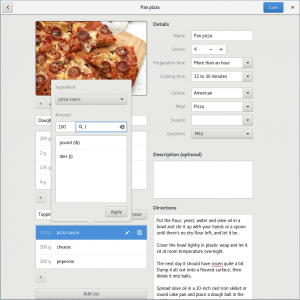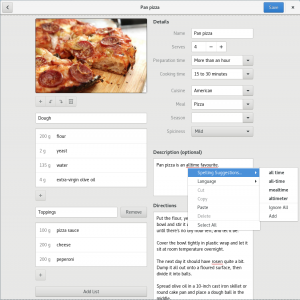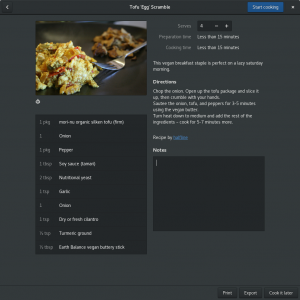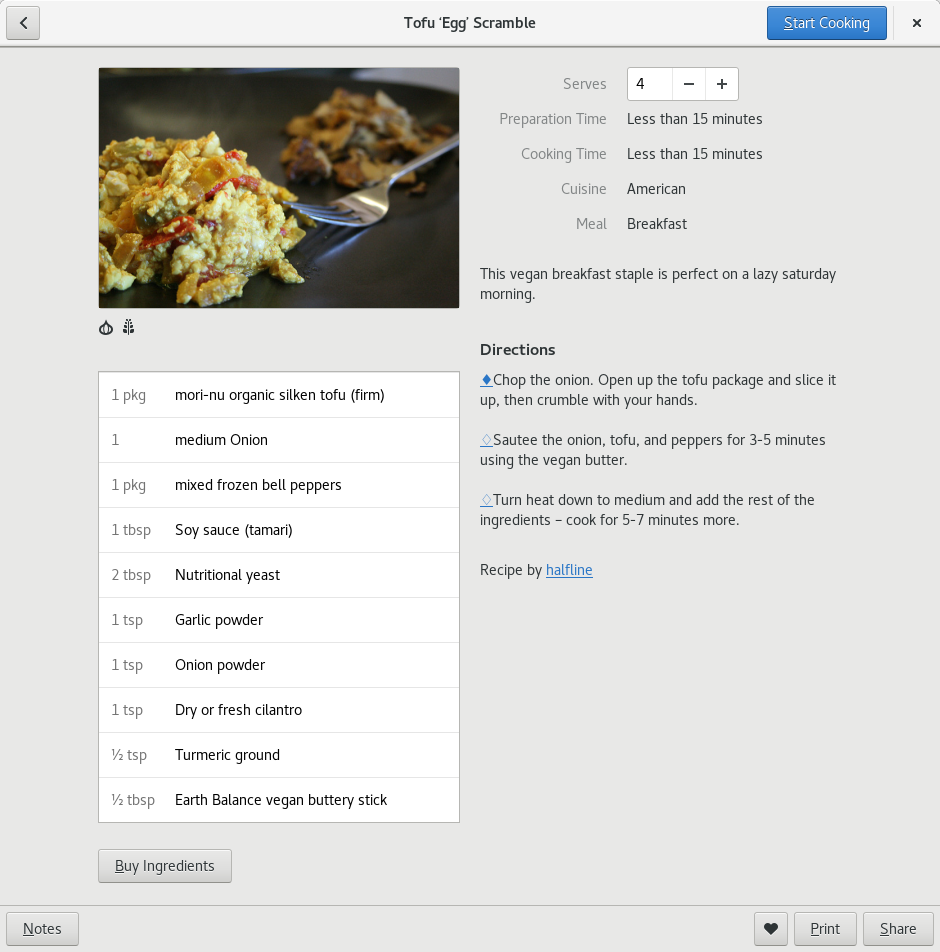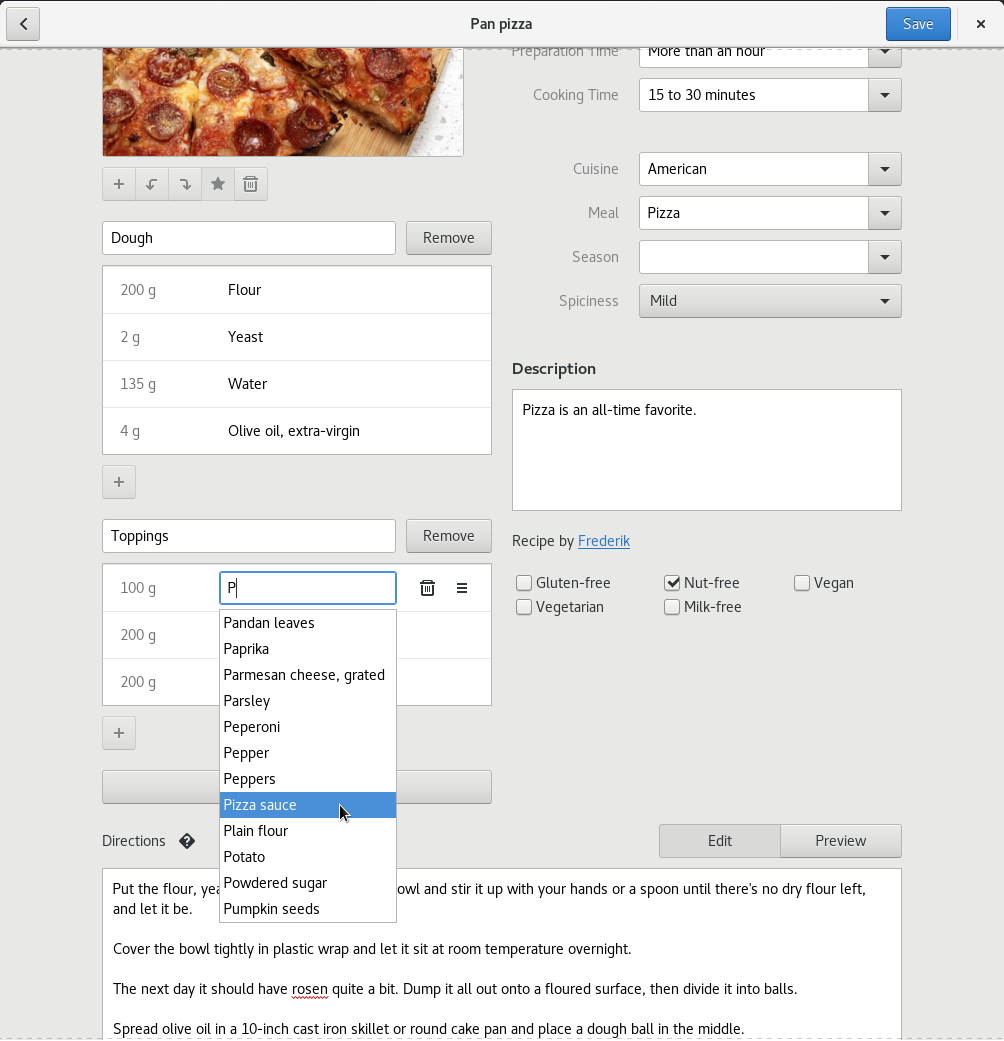GNOME needs a recipe app, since we all love to cook.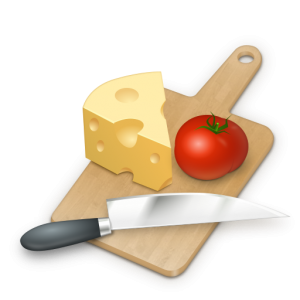 This is not a new idea. Looking all the way back to 2007, the idea of a GNOME cook book already existed back then. For one reason or another, we never quite got there. But the idea has stuck around.
This is not a new idea. Looking all the way back to 2007, the idea of a GNOME cook book already existed back then. For one reason or another, we never quite got there. But the idea has stuck around.

With the upcoming 20th birthday of GNOME next year, some of us thought that we should make another attempt at this application, maybe as a birthday gift to all of GNOME.
Shortly after GUADEC, I got my hands on some existing designs and started to toy around with implementing them over a few weekends and evenings. The screenshots in this post show how far I got since then.

Why did I start to write this app from scratch (instead of e.g. trying to give a face-lift to venerable gourmet) ?
Beyond the obvious reason that I love to code as much as I love to cook, I wanted to give GNOME Builder a more serious test by starting an application from scratch. And I find it very useful to take a look at GTK+ from the application developer side, every now and then. In both of these regards, the endeavor was already successful and has yielded improvements to both GNOME Builder and GTK+. For the cooking part, you can judge that for yourself.
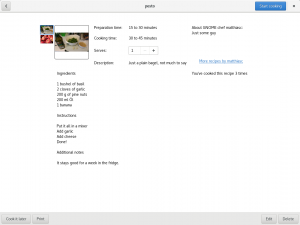
The main reason for writing this post is that we are at a point now where we need contributions to make progress. The idea is that we will include a decent set of recipes from GNOME contributors all over the world with the application.
Therefore, we need your recipes, ideally with good photos.
All the photos and text you see in the screenshots here are just test data that I’ve used during development, and need to be replaced with actual content.
So, how can you contribute your favorite recipes ?
Add your recipe to the app, and when you are satisfied with how it looks, you can use the Export button on the details page to create an archive with the recipe and related information, such as images. The archive also includes information about the author of the recipe (ie yourself), so make sure to provide some information for that in the Preferences dialog.
We just created a bugzilla project for recipes, so you can just attach the archive to a bug:
https://bugzilla.gnome.org/page.cgi?id=browse.html&product=recipes
Please make it clear in the bug that all the included images are your own and that we are allowed to ship it with the app.

Beyond recipes, there are plenty of other ways to contribute, of course. While I’ve tried hard to get many of the features in the initial design implemented, there is a lot more that can be done: for example, unit conversion, or a way to easily share recipes, or to print a shopping list.
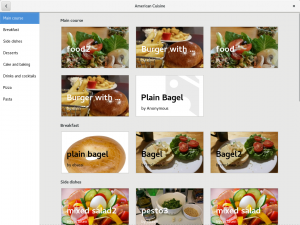
Where do you get it ?
The project started out on github, but it is also available on git.gnome.org now. The design materials are collected on the GNOME wiki.
If you just want to try it out without building it yourself, you can just use Flatpak:
flatpak install --from https://alexlarsson.github.io/test-releases/gnome-recipes.flatpakref
Of course, I did not get this far on my own. Thanks are due to several people. First and foremost, Emel Elvin Yıldız, for the designs and feedback on the implementation, Jakub Steiner for the icon and visuals, and Christian Hergert for keeping this idea alive and for making GNOME builder work great.
 It has been quite a journey from just an idea at GUADEC last August to the application that we have now.
It has been quite a journey from just an idea at GUADEC last August to the application that we have now. A few small features have still made their way in, despite the focus on polish. One thing I’ve played with is making appstream data useful inside the application itself, for showing ‘What’s New’ style information:
A few small features have still made their way in, despite the focus on polish. One thing I’ve played with is making appstream data useful inside the application itself, for showing ‘What’s New’ style information: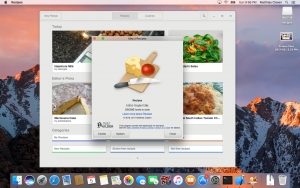 A useful by-product of this effort was a number of bug fixes for the GTK+ Quartz backend, such as working fullscreen and window functions.
A useful by-product of this effort was a number of bug fixes for the GTK+ Quartz backend, such as working fullscreen and window functions.